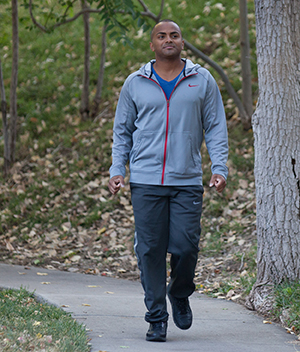Diabetes: Getting Started with Exercise
Diabetes: Getting Started with Exercise
Getting started is easier than you think. Simple and small movements can get you started on a regular exercise routine. You don’t need to join a gym to start moving. Choose an activity you enjoy. Start slowly and set small goals. Work activity into your daily life. Talk to your healthcare provider before starting an activity program. You may need to have a checkup before you begin.
Start with movement
If you’re not used to being active, start with gentle movements while you watch TV. Raise your arms and legs while seated. Then repeat for 5 to 10 minutes. With time, add some slow walking. Even taking a flight of stairs instead of the elevator can lift you to healthier heights. These types of brief activities are great ways to get started. They can help lower your blood sugar level, strengthen your heart, and improve your energy.
Steps toward being more active
Your goal, especially at first, is to keep your activity simple. Slowly work up to 30 minutes of activity a day. But you don’t need to do it all at once. You can be active in 3, 10-minute sessions a day. You can also combine being active with the other things you need to do. For instance, stand up from your desk and walk around often when at work. Or, go for a walk around the mall before you shop.
Keep your activity simple
Why make activity hard on yourself? Choose things that you like to do and that fit into your schedule. Here are some tips:
Get off the bus a stop or two early and walk the rest of the way.
Run small shopping errands on your bike.
Go for a 10-minute walk after each meal.
Park your car in the space farthest from where you’re going.
Get a pedometer that records the number of steps you take. Make a goal for the number of steps you take each day. Increase your goal a little each week.
Keep your activity safe
Safety tips include the following:
Be sure to warm up before you start and cool down when you’re done.
Carry or wear identification, such as a necklace or bracelet, that says that you have diabetes.
Carry a cell phone with you in case you need to call for assistance.
Stay well hydrated before, during, and after your exercise.
Eat 1 to 2 hours before you exercise, if instructed.
Check your blood sugar before and after you exercise, if instructed. Check your blood sugar if you feel symptoms.
Carry fast-acting sugar with you in case you have low blood sugar.
Wear socks and well-fitting shoes. Check your feet for blisters or redness after the exercise.
Think about the weather in your area. At times, you may need to choose indoor rather than outdoor activities.
Stop the activity if you feel any pain, shortness of breath, or light-headedness.
Make your activity fun
Mix fitness with fun. The more fun you have, the more likely you are to stick to your plan. You can have a better blood sugar level along with an active, fun day. Try these hints:
Choose an exercise that you enjoy and can do easily.
Join a social club that goes for walks or does other physical activities.
Go bird watching or do something else that gets you outdoors.
Put on some music and dance.
Involve your family or friends in your physical activity.
Updated:
October 09, 2017
Sources:
Physical Activity/Exercise and Diabetes: A Position Statement of the American Diabetes Association.
Reviewed By:
Hurd, Robert, MD,Image reviewed by StayWell art team.,Sather, Rita, RN,Turley, Ray, BSN, MSN
